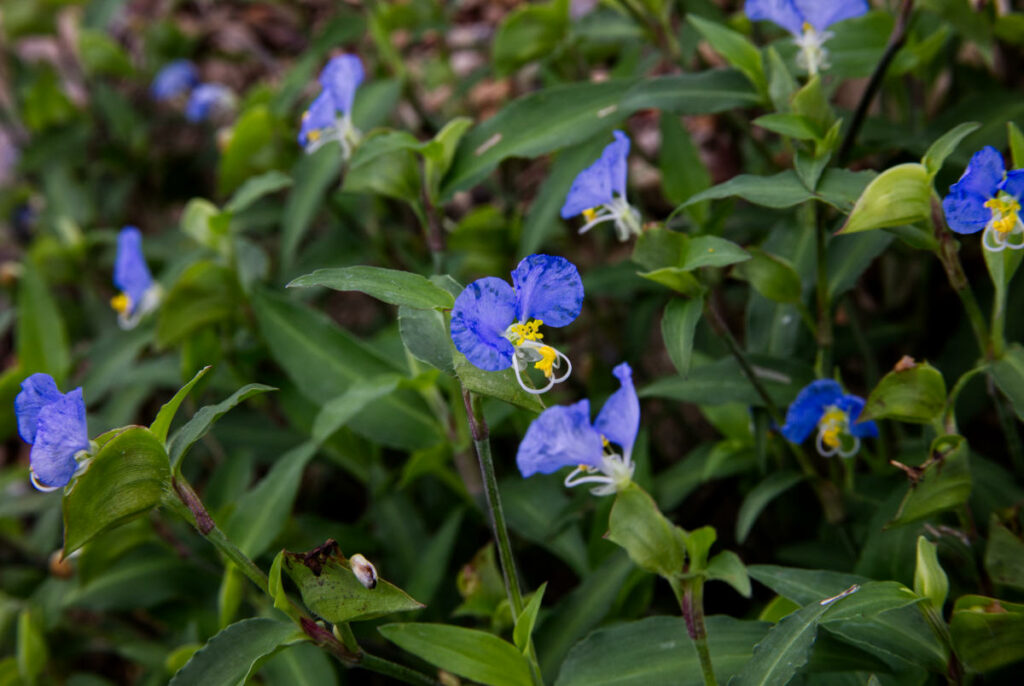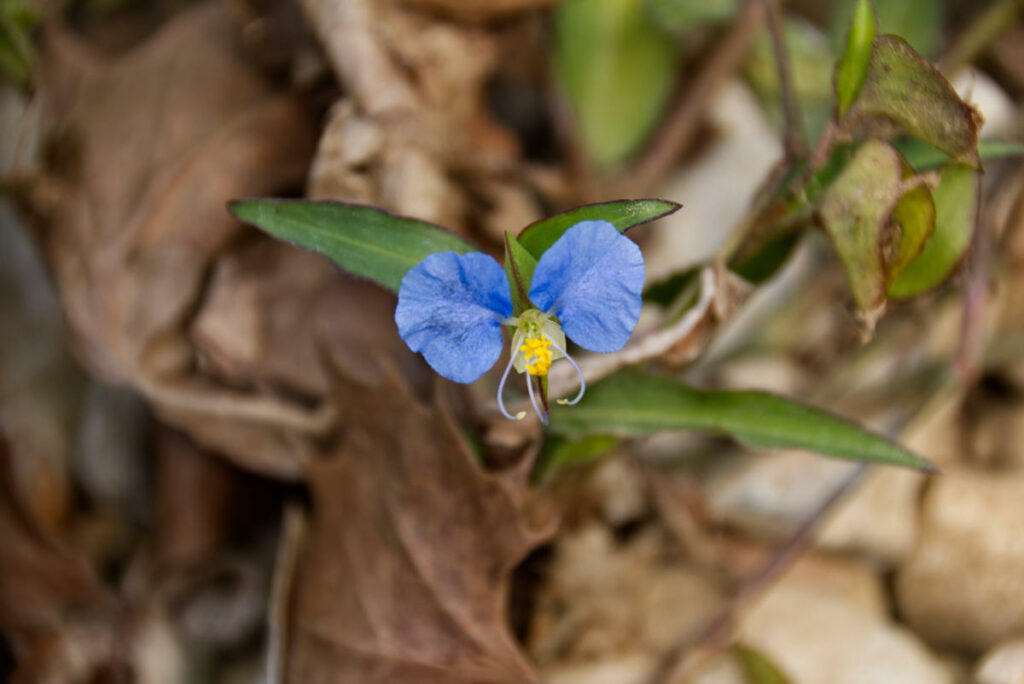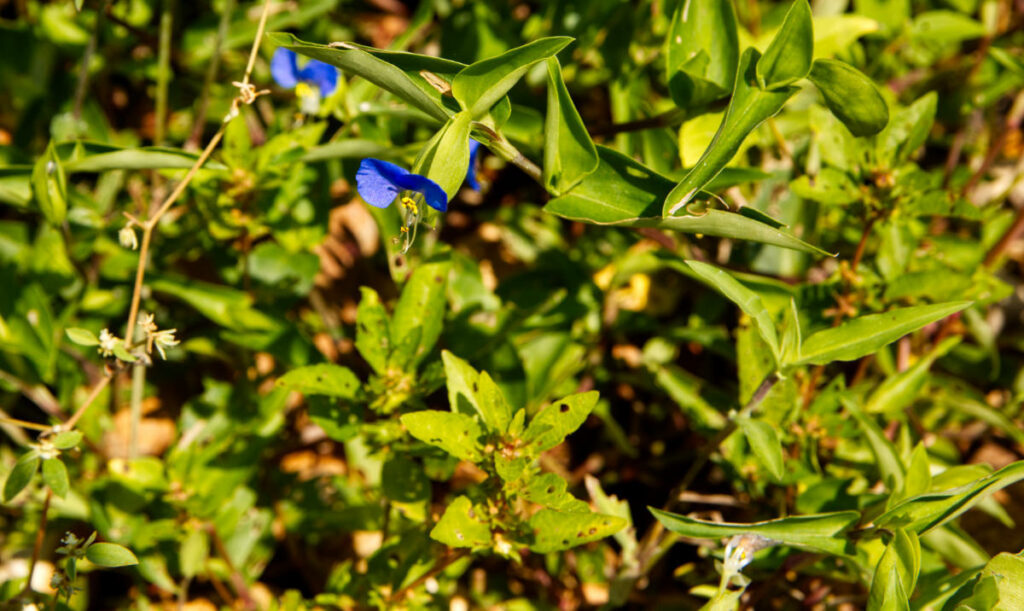
Welcome to the wonderful world of Asiatic Dayflower! This plant might not be as well-known as some of its botanical brethren, but don’t let that fool you – it’s a fascinating and beautiful species. From its vibrant blue petals to its medicinal properties, there’s a lot to discover about this amazing little plant.
This article will take you on a journey through the history, uses, and benefits of this stunning plant. We’ll explore its role in traditional medicine, and its impact on ecosystems, and even share some fun facts that will make you the envy of all your plant-loving friends. Get ready to fall in love with the Asiatic Dayflower – and who knows, you might even spot one on your next walk through the park.
The Asiatic dayflower is the common name that has been used for several species of flowers in the Commelina genus. They are called dayflowers due to the fact that individual flowers only bloom for one day. If you see a flower in the morning, it may be gone if you come back in the evening. However, they will bloom beginning in early spring and throughout the summer, and even into early fall when the weather remains warm.
Identification of Asiatic Dayflower
Identifying this plant can be a bit tricky, so it’s important to know what to look for.
The first thing to note is that it is a low-growing plant, typically reaching heights of around 6-12 inches. It has slender stems that grow in a zig-zag pattern and can be slightly hairy or smooth. The leaves are long and narrow, with pointed tips and a smooth texture.
The most distinctive feature is its flowers. Each flower has three petals, two of which are bright blue and the third is smaller and white. The petals are arranged in a way that gives the flower a unique “face” or “hood” shape. The flowers bloom from June to October and are typically found in shady areas, such as along forest edges or near streams.
When making identification, it’s important to note that it can be confused with other members of the Commelina genus, such as Virginia Dayflower (Commelina virginica). However, the Virginia Dayflower has a more purple-blue color, and its flowers are arranged differently. Another potential lookalike is Spiderwort (Tradescantia virginiana), which has similar blue flowers but its leaves are wider and have a hairy texture.
To summarize, when identifying Asiatic Dayflower, look for:
- Low-growing plant, typically 6-12 inches tall
- Slender stems that grow in a zig-zag pattern
- Long, narrow leaves with pointed tips
- Flowers with three petals, two bright blue and one smaller and white, arranged in a unique “face” or “hood” shape
- Blooms from June to October in shady areas such as forest edges or near streams
With these tips in mind, you’ll be able to confidently identify it and appreciate its beauty on your next hike or nature walk.

Asiatic Dayflower is Edible
Asiatic Dayflower is a versatile plant with a variety of potential uses, including as a wild edible. However, it’s important to exercise caution when consuming any wild plant, as some may have toxic or harmful properties. Here’s what you need to know about using it as a wild edible:
Identification of Asiatic Dayflower:
Before consuming this or any other wild plant, it’s important to make sure you’ve made a proper identification. Refer to a reliable field guide or consult with an expert if you’re unsure. Asiatic Dayflower has long, narrow leaves and distinctive blue flowers with a unique “face” or “hood” shape.
Harvesting:
The best time to harvest it is when it’s in bloom, typically from June to October. Look for plants growing in clean, pesticide-free areas. It’s important to harvest only a small amount to avoid over-harvesting and damaging the plant population.
Preparation:
The leaves and flowers are both edible. The leaves can be eaten raw or cooked, while the flowers can be used to add a pop of color and flavor to salads or as a garnish. The leaves and flowers can also be steeped in hot water to make a refreshing tea.
Nutritional Benefits of Asiatic Dayflower:
It is a good source of vitamins A and C, as well as minerals such as calcium and potassium. It also contains flavonoids and other compounds that have antioxidant and anti-inflammatory properties.
Cautions:
While it is generally considered safe for consumption in small quantities, it’s important to exercise caution when trying any new wild edible. Some people may experience mild digestive upset after consuming Asiatic Dayflower. Additionally, if you have allergies to other plants in the Commelina genus, you may want to avoid Asiatic Dayflower.

Asiatic Dayflower Medicinal Uses
Asiatic Dayflower has a long history of use in traditional medicine for a variety of ailments. While more research is needed to fully understand its medicinal properties, here are some potential uses for Asiatic Dayflower:
Anti-inflammatory:
It contains compounds that have been shown to have anti-inflammatory properties. It has been used traditionally to treat conditions such as arthritis, rheumatism, and other inflammatory conditions.
Diuretic:
It has been used traditionally as a diuretic to help promote urine production and alleviate swelling.
Anti-bacterial:
It has been shown to have antibacterial properties and has been used traditionally to treat conditions such as diarrhea and dysentery.
Anti-tumor:
Some preliminary studies have suggested that compounds found in Asiatic Dayflower may have anti-tumor properties, although more research is needed in this area.
To use it for medicinal purposes, the plant can be prepared as a tea or tincture. To make a tea, steep the leaves and/or flowers in hot water for several minutes. To make a tincture, steep the plant material in alcohol for several weeks.
It’s important to exercise caution when using Asiatic Dayflower for medicinal purposes, as it may have potential side effects and may interact with certain medications. As with any medicinal herb, it’s best to consult with a healthcare professional before using it. Additionally, pregnant or breastfeeding women should avoid using Asiatic Dayflower.
Conclusion
Asiatic dayflower is common and useful both as food and for use medicinally. It is a common wild edible that can be useful to know both for use at home, or in an emergency. If you would like to find out more about other wild edibles be sure and visit our list of articles on living naturally.
Further reading on the Asiatic Dayflower.
FAQs:
Q: Is Asiatic Dayflower invasive?
A: Yes, it is considered an invasive plant in some areas.
Q: How do you grow Asiatic dayflowers?
A: They can be grown from seed or by division of the rhizomes. They prefer moist soil and partial shade.
Q: How does Asiatic Dayflower spread?
A: It can spread by rhizomes or by seeds that are spread by animals or water.
Q: How do you use Asiatic Dayflower?
A: It can be used as a wild edible or for medicinal purposes. The leaves and flowers can be eaten raw or cooked, and the plant can be prepared as a tea or tincture for medicinal use.
Q: How to prepare Asiatic Dayflower?
A: To prepare it for consumption, the leaves and/or flowers can be eaten raw or cooked. The plant can also be prepared as a tea or tincture for medicinal use.
Q: Is Virginia Dayflower the same as Asiatic Dayflower?
A: No, Virginia Dayflower (Commelina virginica) is a different species than Asiatic Dayflower (Commelina communis), although they are both members of the Commelina genus.
Q: What is the medicinal use of Commelina?
A: Commelina has been traditionally used for its anti-inflammatory, diuretic, and anti-bacterial properties. More research is needed to fully understand its medicinal properties and potential side effects.
Q: What does Asiatic Dayflower taste like?
A: It has a mild, slightly sweet taste and a crunchy texture.
Q: Are all day flowers edible?
A: No, not all day flowers are edible. It’s important to properly identify any wild plant before consuming it, and to be aware of any potential toxic lookalikes.
Q: How to prepare Asiatic Dayflower?
A: To prepare it for consumption, the leaves and/or flowers can be eaten raw or cooked. The plant can also be prepared as a tea or tincture for medicinal use. It’s important to properly identify the plant and exercise caution when using it for medicinal purposes.